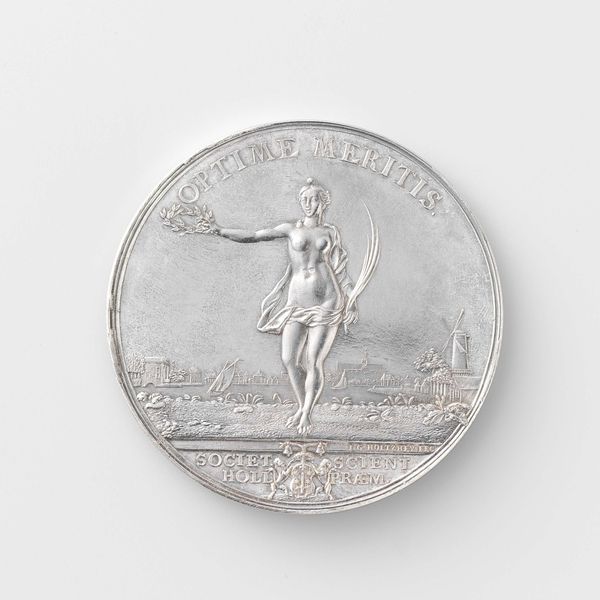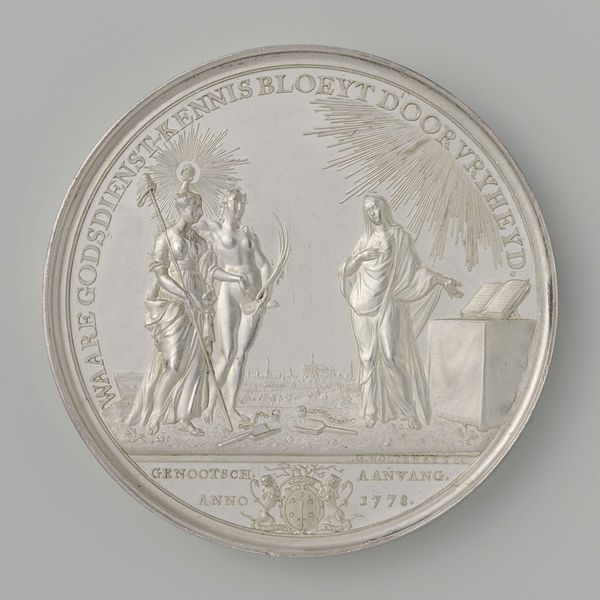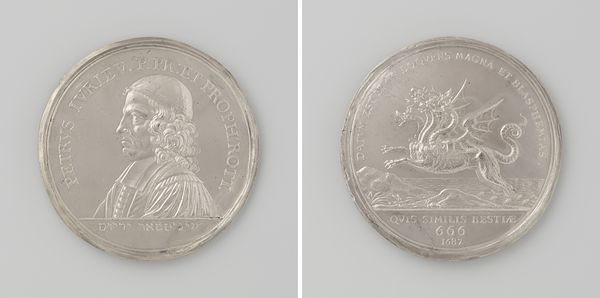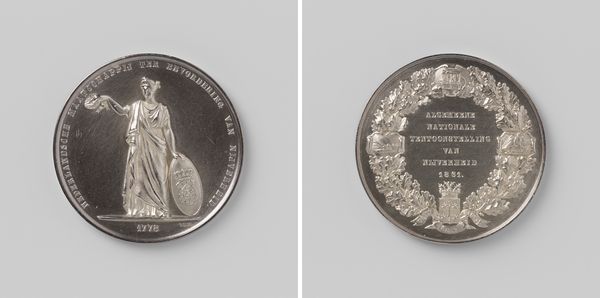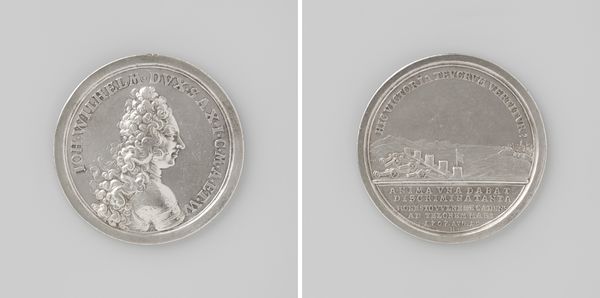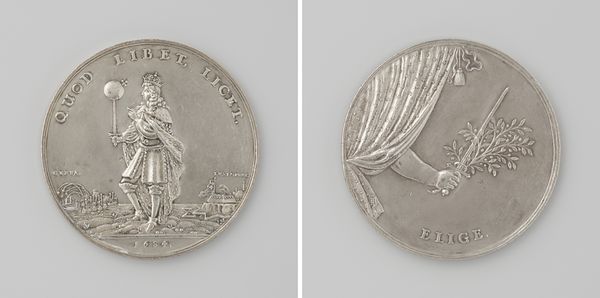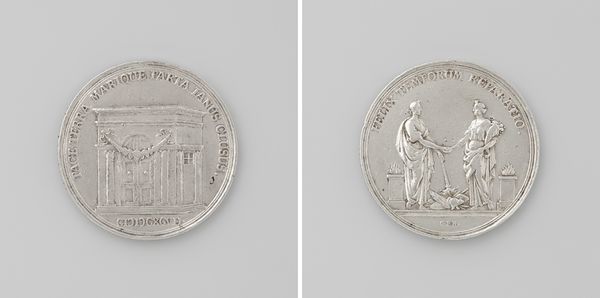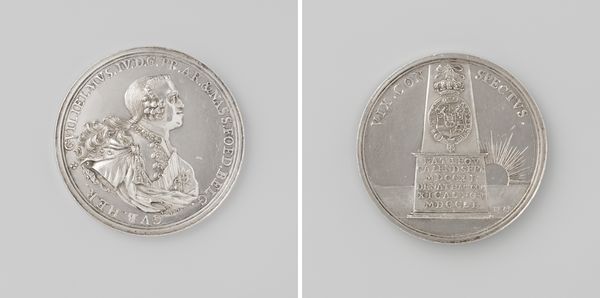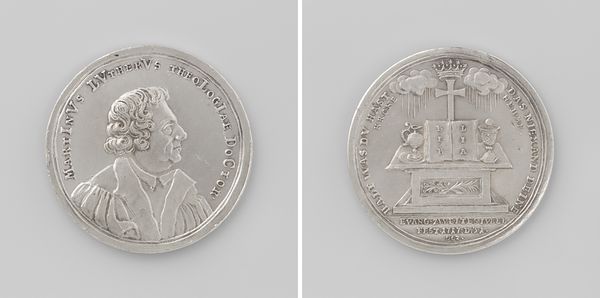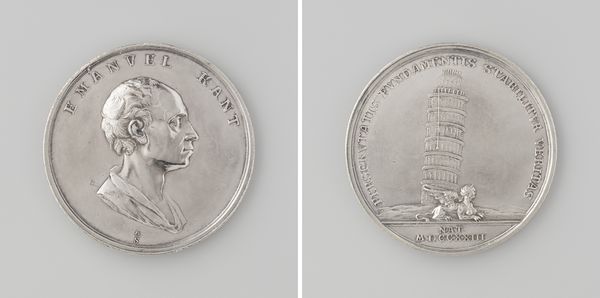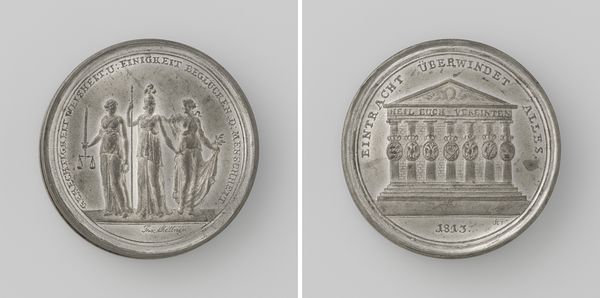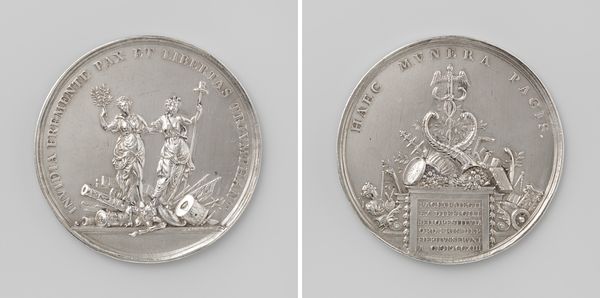
metal, relief, sculpture
#
portrait
#
neoclacissism
#
metal
#
relief
#
sculpture
#
history-painting
Dimensions: diameter 8.7 cm, weight 173.22 gr
Copyright: Rijks Museum: Open Domain
Editor: This metal relief, "Erection of a statue for Michiel de Ruyter," made in 1841 by David van der Kellen, is a compelling image. Its stark presentation and inscription circling the main figure gives it a solemn and official mood. How might we interpret the image and its historical context? Curator: Indeed. Considering this work, we must delve into the social and political climate of the Netherlands in the 19th century, when national identity was being actively constructed. Michiel de Ruyter was already a legendary naval hero of the 17th century. Why do you think they are memorializing de Ruyter again during this specific time? Editor: Possibly to unify the Dutch people, calling on a shared heroic past during a period of national formation? And it gives a boost to national pride. Curator: Precisely. Memorializing national heroes has long served as a way to build that unity. Notice the neoclassical style—the restrained depiction, the Roman lettering of the inscription. What impact does that have on the overall message? Editor: It formalizes and elevates the subject, doesn't it? Makes it feel timeless and authoritative. Neoclassicism, from what I remember, was a conscious revival of classical ideals. What was it doing here? Curator: Neoclassicism, after the end of the Napoleonic wars, with its sense of order and virtue, connects the Dutch Republic to a powerful past. It visually aligns the nation with values considered important for stability and leadership. Do you think such nationalistic narratives are always straightforward? Editor: I imagine there might be conflicting perspectives or ignored stories in such a construction. It makes me think of how we choose who to memorialize, and what that says about our values. Curator: Absolutely. And understanding that constructed nature of history allows us to critically engage with such depictions. I am happy that you share the same view.
Comments
No comments
Be the first to comment and join the conversation on the ultimate creative platform.
